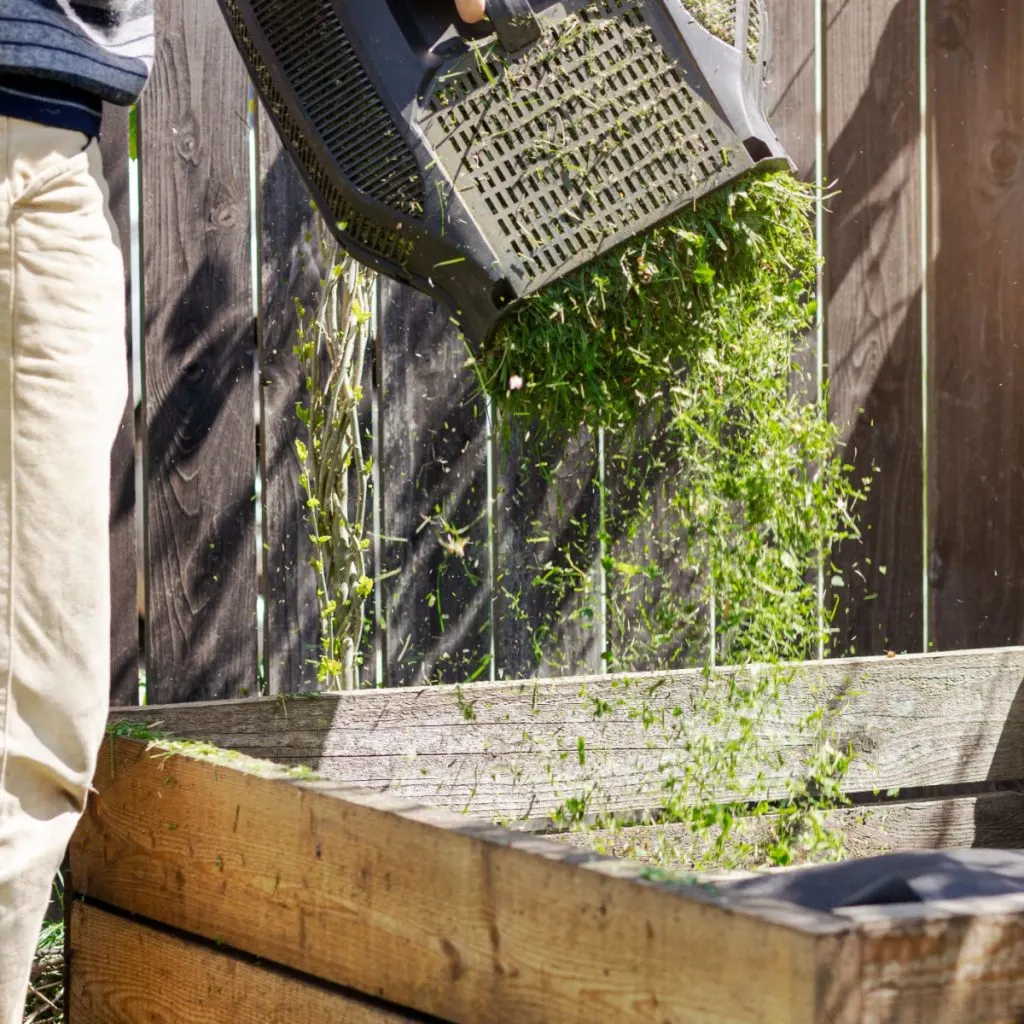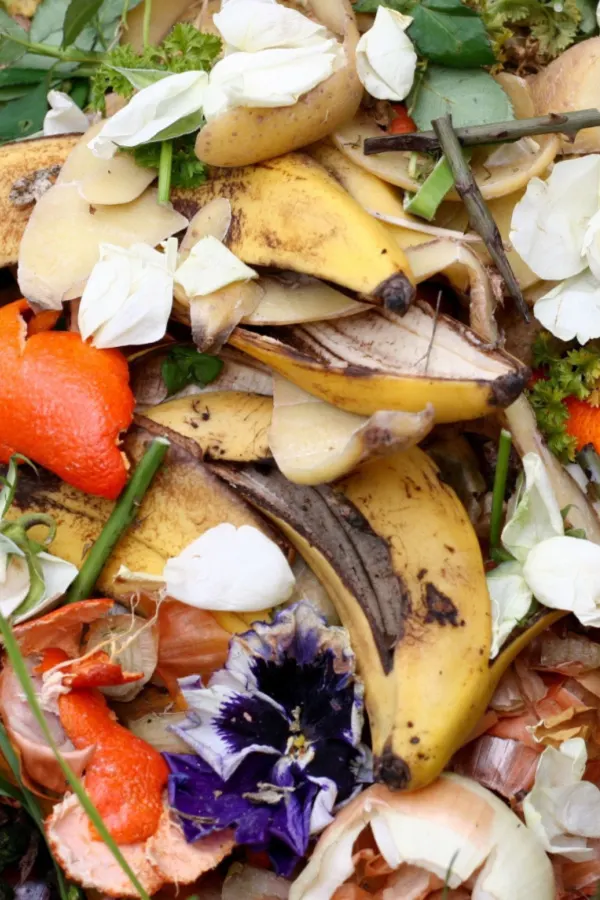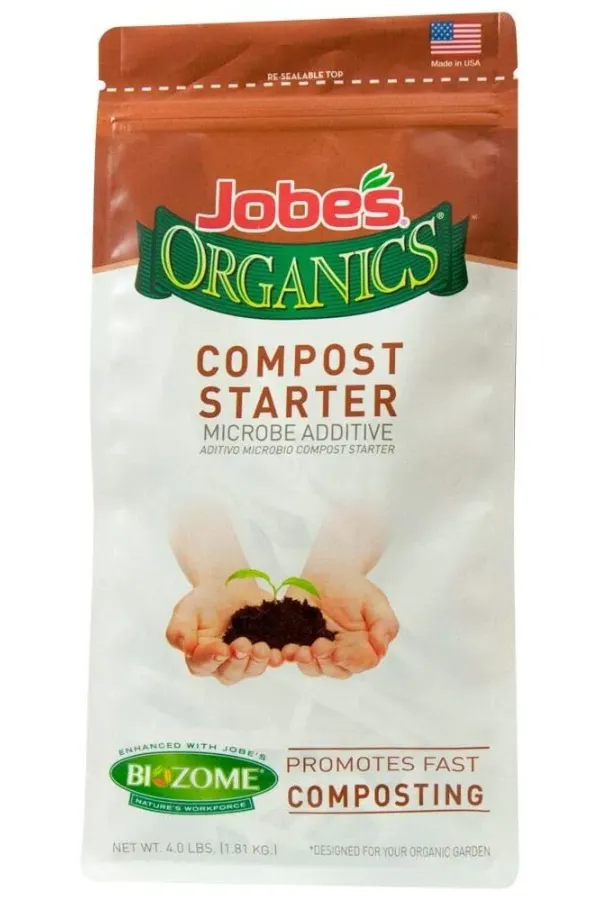Looking to create a compost pile this summer that heats up fast and makes great use of all of those vegetable and flower scraps coming from your garden, flowerbeds and kitchen?
When it comes to finding an abundance of materials to build a compost pile, it doesn’t get any better than in the middle of summer! Whether it’s scraps and peels from the garden’s harvest, or plenty of trimmings from the yard, flowerbeds and landscape, there is a near endless supply of materials that are perfect for creating a compost pile.
Even better, not only are materials easy to find, the warm temperatures and increased humidity during the summer months also make it easy for piles to heat up and decompose rapidly. In fact, so quickly that if you create your pile just right, you can easily have finished compost ready for fall planting and to help recharge your bed soil for next spring.

How To Create A Summer Compost Pile – 3 Simple Secrets To Make Compost Fast!
When it comes right down to it, there are three simple secrets to building a summer compost pile that will heat up fast and decompose quickly. And when all three are met, great things happen to a compost pile.
Not only will your pile heat up quickly – it will also heat to a higher temperature. That allows for the materials to decompose far more rapidly. Even more, the higher internal temperature also helps to kill off any weed seeds and pathogens that might be in the mix, making your finished compost safe for using anywhere.
With creating the perfect summer compost pile in mind – here is a look at the 3 simple secrets to turn all of your summer plant material into black gold – fast!
#1 Use The Right Mix Of Ingredients – How To Create A Great Summer Compost Pile
A hot, fast-working compost pile all starts with having the right mixture of carbon and nitrogen based materials. Carbon materials are dry materials such as old leaves, straw, wood, ash, wood chips and dry grass. These are the more lifeless or “brown” materials that make up a compost pile.

Nitrogen materials on the other hand are the hot or “green” materials of a pile. They are responsible for activating a pile and heating it up. Great sources of nitrogen are fresh vegetable scraps, green lawn clippings, coffee grounds and animal manures.
Getting The Right Ratio Of Materials – How To Create A Great Summer Compost Pile
To create a pile that heats up and decomposes rapidly, you need to have the right ratio of materials. A “perfect” mix for a hot pile should fall somewhere close to the range of 4 parts carbon for every 1 part nitrogen.
When starting a fast pile, it’s best to add and mix all of your materials at once. If you continue to add materials over time, like done in a traditional pile, it will take longer to continually decompose the new addition of ingredients. The good news is that in the summer, it’s easy to find enough to start a big single separate pile!
Finally, make sure you are starting your compost with a helping hand. There are two ways to do this. The first is to add a few shovels of compost from an old pile. If you don’t have that, you can also add in a compost starter.
Either way, you will introduce ready-to-go bacteria and organisms into the pile. This is a huge key in letting your pile start working right from the start! Affiliate Product Link: Jobes Compost Starter
Listen In To Our Podcast On Making Great Compost Below!
#2 Shred Your Ingredients As Fine As Possible – How To Create A Great Summer Compost Pile
Once you have the right mix of materials, it is time to build the pile. A compost pile needs to be large enough in size to generate good heat, but manageable enough for you to work. The perfect size for a backyard compost pile is right around 3′ x 3′.
This allows enough materials to allow for good heat, but also makes it easy to turn and keep well-maintained. But most importantly of all, for a faster working pile, you need materials to be as small as possible to speed decomposition. The smaller the better!
Always shred or chop all ingredients prior to adding to the pile. The more you shred the ingredients, the quicker they break down. In fact, if ingredients are broken down to 1/2″ pieces or less, finished compost can happen in as little as 30 to 60 days!
A great example are leaves. Whole leaves can take two years or more to completely break down in a traditional compost pile. When shredded and added to a hot pile however, they can break down in as little as 3 to 4 weeks.
Chop materials by hand, or use a lawn mower or push mower to take care of the task. An old push mower with a bagging attachment makes for an excellent shredder.

#3 Give Your Pile Air & Water – How To Create A Great Summer Compost Pile
Once you have the right size and mix of materials, success all boils down to keeping the pile active with consistent moisture and oxygen.
In order to create heat, a compost pile needs both water and oxygen. Without both, a pile will decompose slowly and in some cases even sit stagnant. In fact, when most piles begin to smell foul, it’s usually a result of a lack of these 2 critical components.
By turning a compost pile every day or two with a pitchfork or shovel, you provide oxygen to all parts of the pile. It allows the organisms that decompose your pile to remain alive and well.
A pile also needs water in much the same way it needs oxygen. Compost should be damp and moist to the touch. If it dries out completely, it stops generating heat, and the decomposition process stops as well.
Keep your pile moist, adding water before it dries out completely. Be careful though of adding too much water. If a pile becomes too wet, it can have an adverse effect and stop working. A proper compost pile should feel like a damp sponge when you touch it. Anything less is not enough to keep the pile going strong. And anything more can stop the decaying process as well.
Here is to creating compost fast this summer – and to powering your soil and plants to new heights! For more on composting in the cooler months of winter, be sure to check out our article : How To Trench Compost In Winter – Composting Made Easy, All Without A Pile!
This Is My Garden
Follow Our Facebook Page For Great Gardening Tips And Advice! This Is My Garden Facebook Page
This Is My Garden is a garden website created by gardeners, for gardeners. Jim and Mary Competti have been writing gardening, DIY and recipe articles and books and speaking for over 15 years from their 46 acre Ohio farm. They publish three articles every week, 52 weeks a year. Sign up today to follow via email, or follow along!
